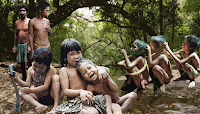Anak Dalam's Animism

The original inhabitants of Jambi province include the Anak Dalam tribe. A small part is in the southern area of Bukit 30 National Park. Indeed, since the ancestors of the Orang Rimba, they have been accustomed to agricultural activities & this can be seen in various taboos that are prohibited when agricultural activities take place. Even though harvesting can only be done after the rubber reaches 9 years of age, the main thing is to prevent the widespread clearing & even selling of forest land by hamlet communities on a large scale, especially the strong flow of illegal logging. The majority of the Anak Dalam tribe adhere to animist beliefs in traditional religion. The three main concepts of causality, as demonstrated by the Anak Dalam tribe in the preoperational stage, include animism, artificialism & transductive reasoning. The Anak Dalam tribe goes through an animism phase, namely a phase where they have an interest in inanimate objects & consider them alive. As a...
